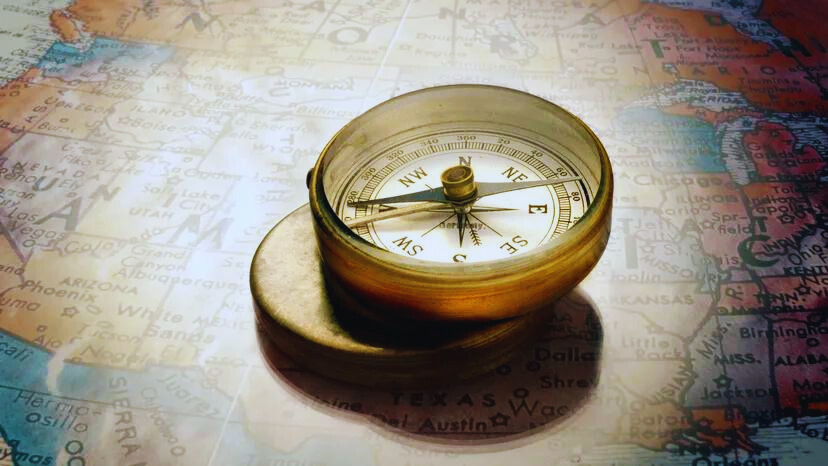Introduction
Navigating through uncharted territories has been a fundamental human challenge for centuries. In today’s technological era, we often rely on GPS systems, but have you ever wondered how our ancestors found their way? One of the oldest and most reliable tools for navigation is the compass. In this article, we will explore the intriguing mechanics behind this timeless device and understand how it helps us find our way with precision.
Understanding Magnetism: The Invisible Force Unraveled

Magnetism, a fundamental force of nature, has intrigued scientists and enthusiasts alike for centuries. This invisible phenomenon, which underpins the functionality of everyday objects like magnets and compasses, arises from the unique behavior of certain materials. Let’s delve into the fascinating world of magnetism and unravel its mysteries.
The Basics of Magnetism:
At its core, magnetism is the property of certain materials to attract or repel other materials. Every magnet has two poles: a north pole and a south pole. Like poles repel each other, and opposite poles attract. This fundamental principle governs the behavior of magnets and the interactions between magnetic objects.
Origin of Magnetism:
Magnetism occurs at the atomic and subatomic levels. In atoms, electrons orbit the nucleus, creating tiny electric currents. These moving charges generate a magnetic field. In materials with aligned atomic magnets, such as iron, cobalt, and nickel, the individual magnetic fields combine, creating a macroscopic magnetic effect.
Types of Magnetism:
There are different types of magnetism, including ferromagnetism, antiferromagnetism, and paramagnetism. Ferromagnetic materials, like iron, become strongly magnetized when exposed to a magnetic field and retain their magnetism even after the field is removed. Antiferromagnetic materials have adjacent magnetic moments oriented in opposite directions, canceling each other out. Paramagnetic materials are weakly attracted to magnetic fields but do not retain magnetism once the field is removed.
Earth as a Magnet:
Earth itself acts as a giant magnet due to the movement of molten iron in its core. Earth’s magnetic field extends from the inner core to the magnetosphere, creating a protective shield against solar radiation. This natural magnetism plays a vital role in the behavior of compass needles, aligning them with the Earth’s magnetic field and aiding navigation.
Applications of Magnetism:
Magnetism finds diverse applications in our daily lives. From refrigerator magnets and magnetic locks to MRI machines and maglev trains, the influence of magnetism is ubiquitous. Magnetic fields are also utilized in research, allowing scientists to study the properties of materials and explore the fundamental principles of the universe.
The Quantum Connection:
On a deeper level, magnetism is intimately connected with quantum mechanics, the branch of physics that describes the behavior of matter and energy at the smallest scales. Understanding the quantum properties of magnetic materials has led to breakthroughs in technology, paving the way for innovations in computing, telecommunications, and materials science.
The Compass Needle: A Magnet in Action
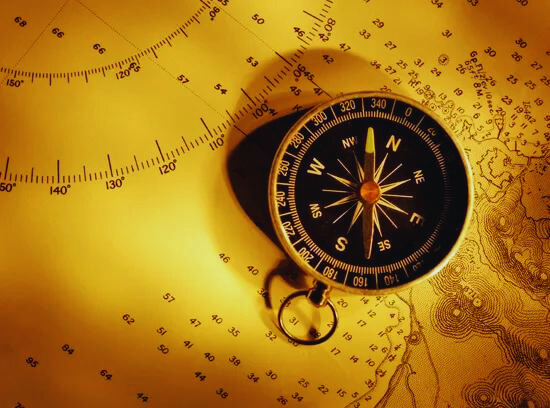
At first glance, a compass needle might appear to be a simple tool, but its functionality is rooted in the fascinating principles of magnetism. In essence, a compass needle is a miniature magnet, a fundamental concept that has guided explorers and navigators for centuries.
Understanding Magnetism
To comprehend the marvel of a compass needle, we need to grasp the basics of magnetism. Every magnet, regardless of its size, possesses two poles: a north pole and a south pole. These poles have distinct properties. Opposite poles attract each other, while similar poles repel.
Earth’s Magnetic Field
Earth itself acts as a giant magnet. The Earth’s core consists of molten iron and nickel, generating a magnetic field that envelops our planet. This magnetic field extends from the Earth’s interior into space, creating an invisible force that influences magnetic materials like the compass needle.
Alignment with Earth’s Magnetism
The magic happens when a compass needle is placed in a stable position. The needle, usually made of materials like steel, aligns itself with the Earth’s magnetic field. The north-seeking end of the needle is naturally drawn towards the Earth’s magnetic north pole. This alignment occurs due to the interaction between the magnetic field of the Earth and the magnetism inherent in the compass needle.
The Role of the South Pole
Simultaneously, the south-seeking end of the compass needle points towards the Earth’s magnetic south pole. This dual alignment allows the compass needle to pivot freely, ensuring that it always points in a consistent direction, aiding travelers in finding their way.
Significance in Navigation
The stability of the compass needle, responding faithfully to the Earth’s magnetic forces, makes it an indispensable tool for navigation. Whether on land, at sea, or even in the air, the compass needle’s ability to align with Earth’s magnetic field provides a reliable reference point, allowing navigators to determine cardinal directions with ease.
The Role of Earth’s Magnetic Field
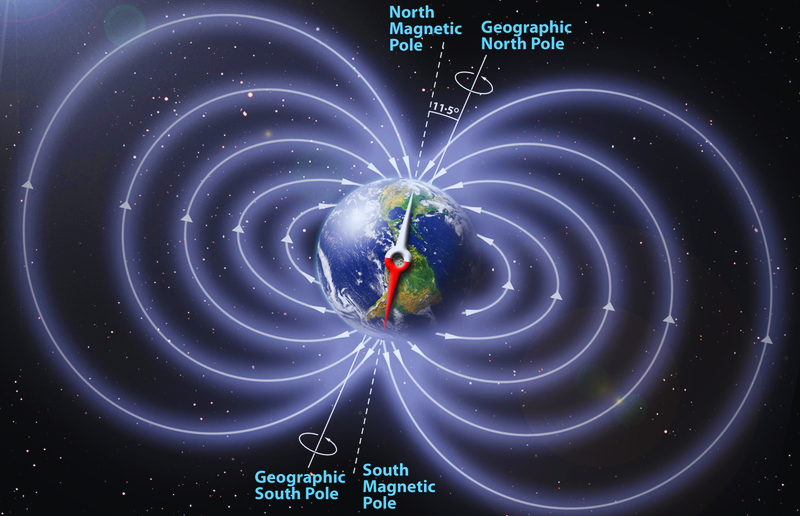
Understanding the role of Earth’s magnetic field is essential to grasp the functioning of a compass. Earth’s magnetic field is a powerful and complex force that surrounds our planet, extending from the Earth’s interior into space. This invisible field is generated by the movement of molten iron and nickel in the Earth’s core. The magnetic field has two poles: the north magnetic pole and the south magnetic pole, similar to the poles of a magnet.
Creating a Magnetic Shield
One of the primary functions of Earth’s magnetic field is to create a protective shield around the planet. This shield, often referred to as the magnetosphere, deflects harmful solar and cosmic radiation, preventing it from directly reaching the Earth’s surface. Without this magnetic shield, our planet would be vulnerable to the detrimental effects of these radiations, making it difficult for life to thrive.
Guiding Compass Needles
Earth’s magnetic field plays a crucial role in the functioning of compasses. A compass consists of a small magnet, and when placed in the Earth’s magnetic field, the magnet aligns itself with the field. The north-seeking end of the compass needle points towards the Earth’s magnetic north pole, and the south-seeking end points towards the magnetic south pole. This alignment allows travelers and explorers to determine their direction accurately, making compasses invaluable tools for navigation.
Aurora Borealis and Aurora Australis
Earth’s magnetic field is also responsible for the mesmerizing natural phenomena known as the auroras. When charged particles from the Sun enter the Earth’s magnetosphere and collide with atoms and molecules in the atmosphere, they produce colorful lights in the sky near the magnetic poles. These lights, called the Aurora Borealis in the Northern Hemisphere and Aurora Australis in the Southern Hemisphere, are a stunning visual display of the interactions between Earth’s magnetic field and solar particles.
Magnetic Field Variations
It’s important to note that Earth’s magnetic field is not uniform and constant. It varies in strength and direction at different locations on the Earth’s surface. These variations, known as magnetic anomalies, are caused by the uneven distribution of magnetic materials in the Earth’s crust. Scientists study these anomalies to gain insights into the Earth’s geological composition and the movement of tectonic plates.
The Cardinal Directions: Navigational Signposts in Nature
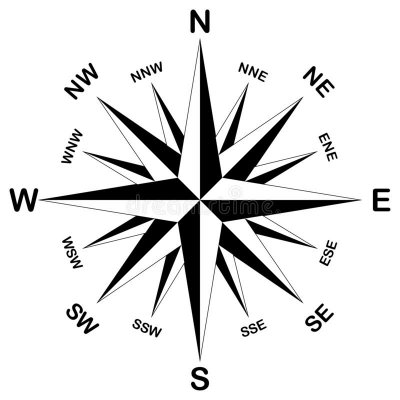
The cardinal directions—north, south, east, and west—are the fundamental points of reference on the Earth’s surface. They serve as essential navigational signposts, guiding travelers and explorers in their journeys across vast landscapes and open waters.
North: The Pole Star and True North
North, the cardinal direction pointing towards the Earth’s geographic North Pole, has a special significance in navigation. The North Star, also known as Polaris, appears almost stationary in the night sky, making it a reliable celestial marker for determining true north. For centuries, sailors and adventurers have used Polaris to orient themselves, ensuring accurate navigation even in the absence of modern tools.
South: A Gateway to Antarctica
South, representing the opposite cardinal direction leads to the Earth’s geographic South Pole. In contrast to the North Pole, which is located in the Arctic Ocean, the South Pole is situated on the continent of Antarctica. The Southern Hemisphere’s vast, icy expanse challenges explorers and navigators must carefully plan their routes to navigate this challenging terrain.
East: Where the Sun Rises
East marks the direction from which the sun rises each day. Sunrise in the east has cultural and symbolic significance in various traditions, symbolizing new beginnings and the promise of a fresh start. In navigation, east serves as a vital reference, especially during early mornings, helping travelers align their course with the sun’s ascent.
West: The Realm of Sunset
West is where the sun sets, marking the end of the day. As the sun dips below the horizon, the sky often paints a vivid tapestry of colors, creating awe-inspiring sunsets. Westward journeys have historical importance, with explorers venturing into the unknown, chasing the setting sun and the mysteries it conceals.
Practical Use in Navigation
For travelers, understanding the cardinal directions is fundamental. Maps, compasses, and even modern GPS systems are all based on the cardinal points. Whether navigating dense forests, crossing vast deserts, or sailing across oceans, individuals rely on the cardinal directions to maintain their bearings and reach their destinations safely.
Variations and Corrections: Navigating the Magnetic Maze
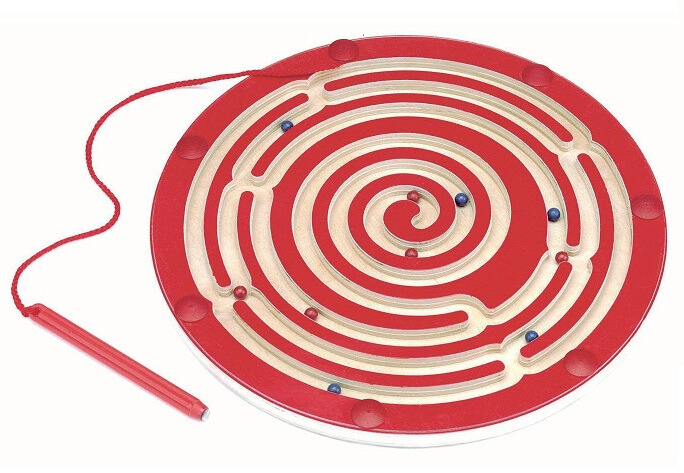
Navigating using a compass is not always as straightforward as pointing it in a specific direction and walking. Variations in the Earth’s magnetic field, known as magnetic declination, can introduce complexities that navigators must account for to ensure accurate direction-finding. Understanding these variations and making necessary corrections is crucial for reliable navigation.
Magnetic Declination Explained
Magnetic declination is the angle between true north (geographic north) and magnetic north, the direction a compass points. This variance occurs due to changes in the Earth’s magnetic field caused by factors like the movement of molten iron in the Earth’s core. Magnetic declination is not constant and can vary significantly based on geographic location.
How Variations Impact Navigation
For navigators, failing to consider magnetic declination can result in inaccurate readings. If a compass is used without adjusting for local declination, the intended direction might be off course. In scenarios requiring precise navigation, such as aviation or marine travel, even a small deviation can lead to significant errors over long distances.
Determining Local Magnetic Declination
To navigate accurately, it’s essential to determine the local magnetic declination for the specific location. This information is typically available on topographic maps or can be obtained from geological surveys and online resources. Once the declination angle is known, navigators can make appropriate adjustments to their compass readings.
Correcting Compass Readings
Navigators can correct compass readings by either adding or subtracting the magnetic declination angle, depending on whether the declination is east or west. By applying this correction, the compass aligns with the true north, providing accurate directional information. It’s vital to update these corrections regularly, especially when covering vast distances, to account for changes in declination over time.
Advanced Navigation Techniques
In addition to manual corrections, advanced navigation methods, such as using GPS devices and electronic compasses, automatically account for magnetic declination. These tools provide real-time, accurate headings, eliminating the need for manual adjustments and ensuring precise navigation even in challenging environments.
Applications in Modern Navigation: Beyond the Compass Rose
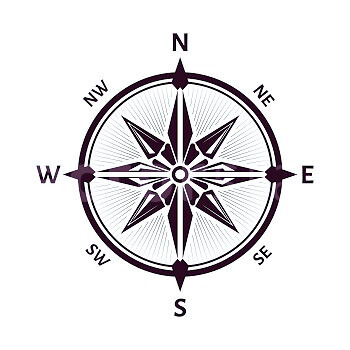
In today’s technologically advanced world, the applications of navigation extend far beyond the traditional use of a compass and maps. Modern navigation techniques have revolutionized various industries, enabling efficient and precise movement across land, sea, and air. Here’s a glimpse into the diverse applications of modern navigation methods:
1. Aviation:
Modern aircraft are equipped with sophisticated navigation systems, including GPS (Global Positioning System) and inertial navigation systems. These systems provide real-time data on the aircraft’s position, altitude, and heading, ensuring accurate flight paths and safe landings even in adverse weather conditions.
2. Marine Navigation:
Maritime navigation heavily relies on advanced GPS technology and electronic charts. Ship navigation systems integrate GPS data with radar, sonar, and AIS (Automatic Identification System) to create a comprehensive picture of the vessel’s surroundings. This aids in collision avoidance, route optimization, and efficient port navigation.
3. Automotive Navigation:
GPS-based navigation systems have become ubiquitous in vehicles, guiding drivers with turn-by-turn directions. These systems offer real-time traffic updates, alternate route suggestions, and points of interest, enhancing driver safety and convenience.
4. Mobile Devices and Mapping Applications:
Smartphones and tablets have GPS capabilities, enabling users to access mapping applications for walking, cycling, or driving directions. These applications provide detailed maps, real-time traffic information, and even offline navigation options, empowering users to explore unfamiliar areas confidently.
5. Search and Rescue Operations:
Modern navigation technology plays a critical role in search and rescue missions. GPS-enabled devices help rescuers pinpoint the location of distress signals, allowing swift and accurate responses during emergencies, both on land and at sea.
6. Space Exploration:
Spacecraft and satellites use advanced navigation systems for precise trajectory calculations and orbital maneuvers. Autonomous navigation technology ensures that space probes can navigate vast distances, rendezvous with other celestial bodies, and collect valuable data for scientific research.
7. Precision Agriculture:
GPS technology aids farmers in precision agriculture practices. Tractors and farming equipment are equipped with GPS systems that enable precise planting, fertilization, irrigation, and harvesting. This precision maximizes crop yields and minimizes resource wastage.
8. Geocaching and Outdoor Activities:
Enthusiasts engage in geocaching, a recreational activity where GPS coordinates are used to hide and seek containers, called “geocaches” or “caches.” GPS devices guide participants to these hidden treasures, promoting outdoor exploration and adventure.
Conclusion
The simple yet ingenious design of the compass has been guiding explorers, adventurers, and travelers for centuries. Understanding the principles behind its functionality enriches our knowledge of the natural world and our ability to navigate it effectively.
Read also: How Does Mr. Krabs Die? Bikini Bottom’s Financier
Frequently Asked Questions:
How accurate is a compass in navigation?
Compasses are highly accurate for general navigation purposes. However, variations like magnetic declination should be considered for precise navigation.
Can a compass be affected by external factors?
Yes, external factors such as nearby magnetic objects, electrical devices, and large metal structures can interfere with a compass’s accuracy.
Can a compass work in space?
In space, where there is no magnetic field, a traditional compass as we know it would not function. Astronauts rely on other navigation methods suited for space exploration.
How do I use a compass for hiking?
When hiking, hold the compass flat and level, and rotate your body until the needle aligns with the orienting arrow. The direction you’re facing is your desired heading.
Is there any difference between a magnetic compass and a digital compass?
Both types of compasses serve the same purpose, but a digital compass provides additional features such as GPS integration and electronic display, making it more versatile for certain applications.
